
Jacqueline Cochran was an American pilot and business executive. She pioneered women's aviation as one of the most prominent racing pilots of her generation. She set numerous records and was the first woman to break the sound barrier on 18 May 1953. Cochran was the wartime head of the Women Airforce Service Pilots (WASP) (1943–1944), which employed about 1000 civilian American women in a non-combat role to ferry planes from factories to port cities. Cochran was later a sponsor of the Mercury 13 women astronaut program.
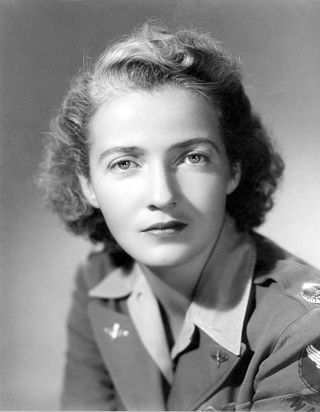
Nancy Harkness Love, born Hannah Lincoln Harkness, was an American pilot and airplane commander during World War II. She earned her pilot's license at age 16. She worked as a test pilot and air racer in the 1930s. During World War II she convinced Colonel William H. Tunner of the U.S. Army Air Forces to look to set up a group of female pilots to ferry aircraft from factories to air bases. This proposal was eventually approved as the Women's Auxiliary Ferrying Squadron. Love commanded this unit and later all ferrying operations in the newly formed Women Airforce Service Pilots. She was awarded the Air Medal for her work during the war and was appointed lieutenant colonel in the US Air Force Reserve in 1948.

The Women Airforce Service Pilots (WASP) was a civilian women pilots' organization, whose members were United States federal civil service employees. Members of WASP became trained pilots who tested aircraft, ferried aircraft, and trained other pilots. Their purpose was to free male pilots for combat roles during World War II. Despite various members of the armed forces being involved in the creation of the program, the WASP and its members had no military standing.

Betty Gillies was an American aviator, and the first pilot to qualify for the Women's Auxiliary Ferrying Squadron, later amalgamated into the Women Airforce Service Pilots.
Evelyn Genevieve "Sharpie" Sharp was an American aviator. She was a member of the Women Airforce Service Pilots (WASP). Sharp died at age 24, when the plane she was flying lost an engine during takeoff.

Micky Axton was an American aviator who was a test pilot during World War II. Axton was "one of the first three Women Airforce Service Pilots to be trained as a test pilot" and was the first woman to fly a B-29.
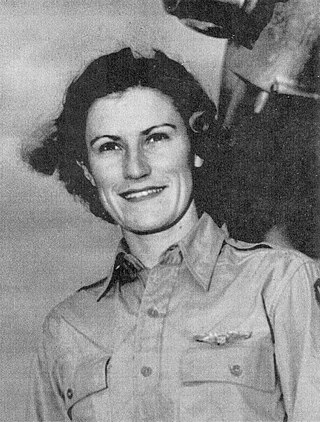
Iris Cummings, also known by her married name Iris Critchell, is an American aviator and former competition swimmer who represented the United States at the 1936 Summer Olympics in Berlin, Germany. After an active athletic career in swimming, which included a reign as U.S. national 200-meter breaststroke champion from 1936 to 1939, she was accepted into the University of Southern California's first Civilian Pilot Training Program in 1939. After graduation, she worked as a flight instructor prior to being selected to serve her country during World War II as a member of the Women's Auxiliary Ferrying Squadron (WAFS) and Women Airforce Service Pilots (WASP). Following the conflict, she returned to California, where she developed and taught a curriculum on civilian flight for veterans returning from the war at the University of Southern California.
Jane Sincell Straughan was an American aviator known for her contribution as a Women Airforce Service Pilot from 1942 to 1944. She remained active in aviation throughout her life, serving on the Civil Aeronautics Board and being a captain in the Air Force Reserve.
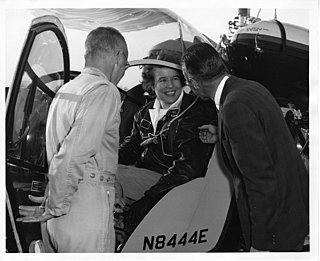
Dora Jean Dougherty Strother was an American aviator best known as a Woman Airforce Service Pilots (WASP) and B-29 Superfortress demonstration pilot. She was a U.S. military pilot, human factors engineer with Bell Aircraft, instructor at the University of Illinois and helicopter test pilot for Bell Aircraft.

Elaine D. Harmon was an American from Maryland who served in the U.S. Women Airforce Service Pilots (WASP) during World War II. In 2009 she received a Congressional Gold Medal for her service as a pilot during World War II. As a WASP pilot, she has been accorded full military honors at Arlington National Cemetery. In 2016, Ms. Harmon was posthumously inducted into the Maryland Women's Hall of Fame.
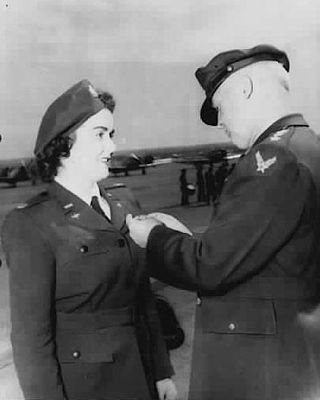
Barbara Erickson London was a Women Air-force Service Pilot (WASP) and a member of the Women's Auxiliary Ferrying Squadron (WAFS). She was a ferry pilot – picking up and delivering various military aircraft to and from factories and airbases throughout the United States. She won the Air Medal, and was the only woman awarded one in World War II.

Bernice "Bee" S. Falk Haydu was an American aviator and served as a Women Airforce Service Pilot (WASP) in World War II. Haydu remained active in aviation and remained an advocate for women pilots.

Hazel Jane Raines was an American pioneer aviator and flight instructor with the Civilian Pilot Training Program. During World War II, she was part of the first group of United States women to fly military aircraft, which they did in a war zone for the civilian British Air Transport Auxiliary. She was later a member of the civilian contract labor Women Airforce Service Pilots. After the war, she taught instrument training in Brazil. When President Harry S. Truman authorized the integration of women into the military, she served with Women in the Air Force and was based in Texas, Alabama, and finally London until her death. Raines was the first woman in Georgia to earn a pilot's license, and has been inducted into both the Georgia Aviation Hall of Fame and the Georgia Women of Achievement.
Elizabeth Haas Pfister was an American aviator.

Evelyn Greenblatt Howren was an American woman aviator from Atlanta, Georgia. She helped organize the first all-woman squadron of the Civil Air Patrol, was one of the first women air traffic controllers in the U.S., and was in the first class of Women Airforce Service Pilots in World War II. After the war she remained active in the aviation business in Georgia for many years. She was the third woman inducted into the Georgia Aviation Hall of Fame.

Florene Miller Watson was an American aviator and educator from Texas. Watson was one of the first Women's Auxiliary Ferrying Squadron (WAFS) volunteers. She went on to fly for the Women Air Force Service Pilots (WASP) throughout World War II. During that time, she worked as a trainer, ferried aircraft and was a test pilot.

Mary Anna Martin "Marty" Wyall was an American aviator. Wyall was part of the last class of Women Airforce Service Pilots (WASP) and later became the unofficial WASP historian. She was instrumental in organizing the WASP veterans together years after they served.

Helen Maude Wyatt Snapp was an American aviator. Snapp became one of the Women Airforce Service Pilots (WASP) in 1943.
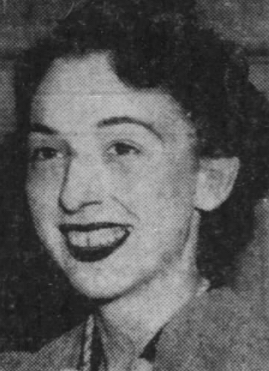
Gwendolyne Elizabeth Cowart was an American pilot who served as a Women Airforce Service Pilot (WASP) during World War II.
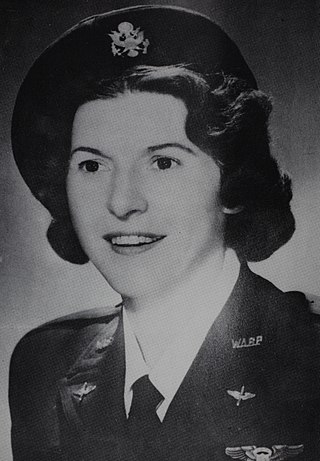
Katherine "Kay" Adams Menges Brick was an important American aviator. She served in WWII in the U.S.'s Women Airforce Service Pilots (WASP). After the war she was active in the Ninety-Nines: International Organization of Women Pilots, serving as Secretary and International President. She also served in other aviation-related boards and associations.

















